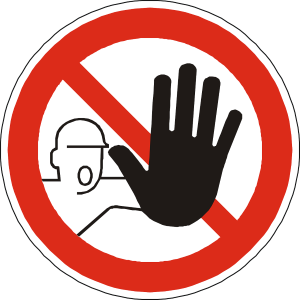We constantly tout the value of inspections in business, but we always stress that no inspection program will be effective without sufficient buy-in from personnel.
You can put the right processes in place, such as using The Checker inspection checklists. However, if the people who need to be safe don’t follow those processes, your inspection initiatives won’t achieve their goals.
We’ve seen repeatedly that buy-in can be achieved through training and education—not only about how to properly conduct inspections but also concerning the critical role inspections play in safety. When personnel know how to do inspections quickly and efficiently—and they understand how inspections protect them personally—they naturally come to think of them as an important use of their time.
 The unfortunate reality, however, is that even with your best efforts to get buy-in, some personnel will stubbornly resist paying attention to your messages, and they won't do any work they think they can get away with not doing. The training and education you provide will go in one ear and out the other, and they’ll prefer to idle away their time rather than do inspections.
The unfortunate reality, however, is that even with your best efforts to get buy-in, some personnel will stubbornly resist paying attention to your messages, and they won't do any work they think they can get away with not doing. The training and education you provide will go in one ear and out the other, and they’ll prefer to idle away their time rather than do inspections.
Consequences That Get Attention
We’re not talking about all, or even most, of your personnel. Particularly if you’ve done a good job of hiring, the ones who don’t appreciate the importance of inspections or are simply lazy may just be a few bad apples. But unless your company is a rare exception, you will have some personnel who aren’t going to do inspections unless you make doing them an absolute requirement.
This means that—as much as you want your personnel to diligently follow inspection policies for the right reasons—your inspection program has to include consequences for not doing them.
The exact consequences will depend on each company’s situation. What they must have in common to be effective is that they truly matter to personnel. Calling inspection scofflaws out—by posting a list of people who have failed to do their required inspections, for example—probably won’t have the desired effect. To get them to pay attention and do inspections as they should, you’re going to have to tie doing inspections to their wallet, their duties, or their job security.
You’ll get their attention if they know that not doing inspections properly will have negative effects on their promotions/raises or lead to them being assigned to do less-desirable work. It may even be necessary to make it a fireable offense to repeatedly fail to adhere to inspection policies.
If that seems like an overreaction, remind yourself of the devastating consequences of workplace injuries in terms of business costs, fines, and liability exposure. If someone won’t get on board with the inspection program, then employing them to do a job in which safety inspections are necessary is like playing Russian roulette.
Pencil Whipping Not Allowed
It’s essential to realize that filling out The Checker or any other inspection form is not proof that personnel are doing inspections properly. Whether inspections are being done on paper or mobile devices, they can be “pencil whipped,” which occurs when someone is just checking boxes on the form without really inspecting the items. This dereliction cannot be tolerated, and must have consequences just as if they had not filled out the form at all.
Being able to detect pencil whipping is one of the many benefits of a systematic inspection program like The Checker. With such a program, someone who is pencil-whipping inspections will inevitably be found out. Systematic ways in which you can discourage this behavior include built-in double-checks (e.g., inspections required before and after equipment use) and spot checks of how well inspections have been done immediately after they’re completed.
Takeaway
In an ideal world, all personnel would gladly adhere to inspection policies because they understand how inspections protect their own skins while also benefiting the company. Unfortunately, the reality is that strong inspection programs must include clear consequences for not following mandated inspection processes.










